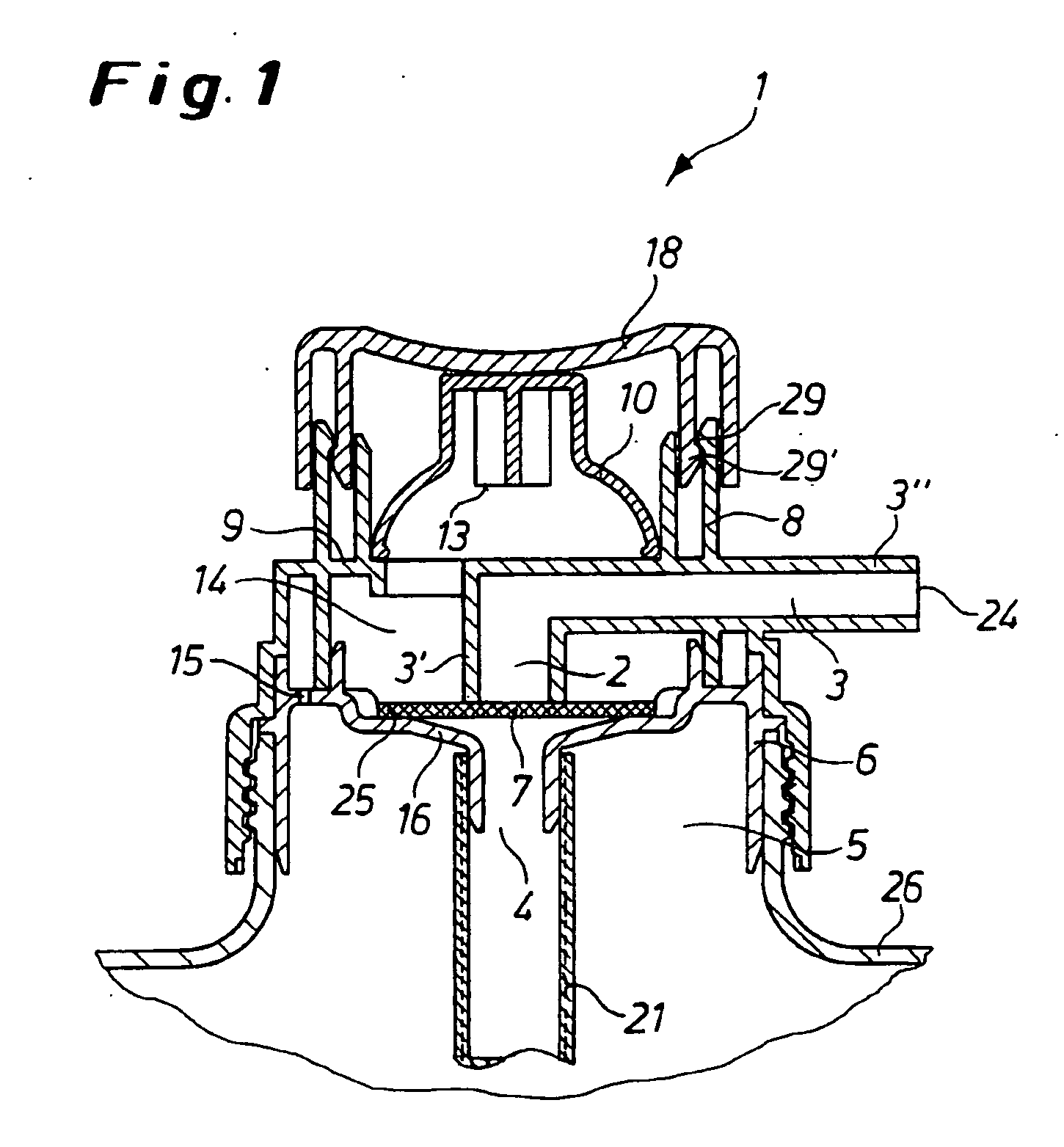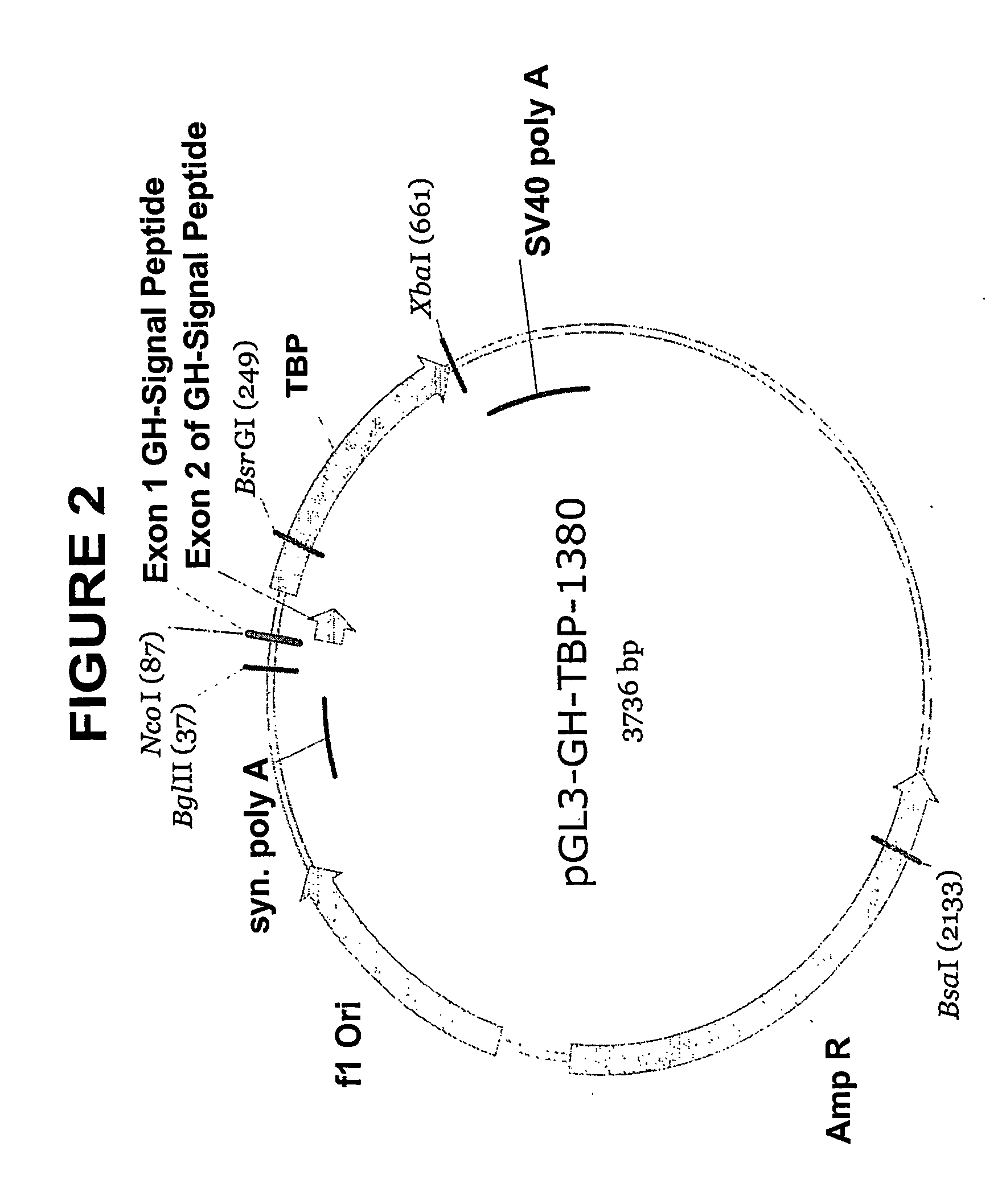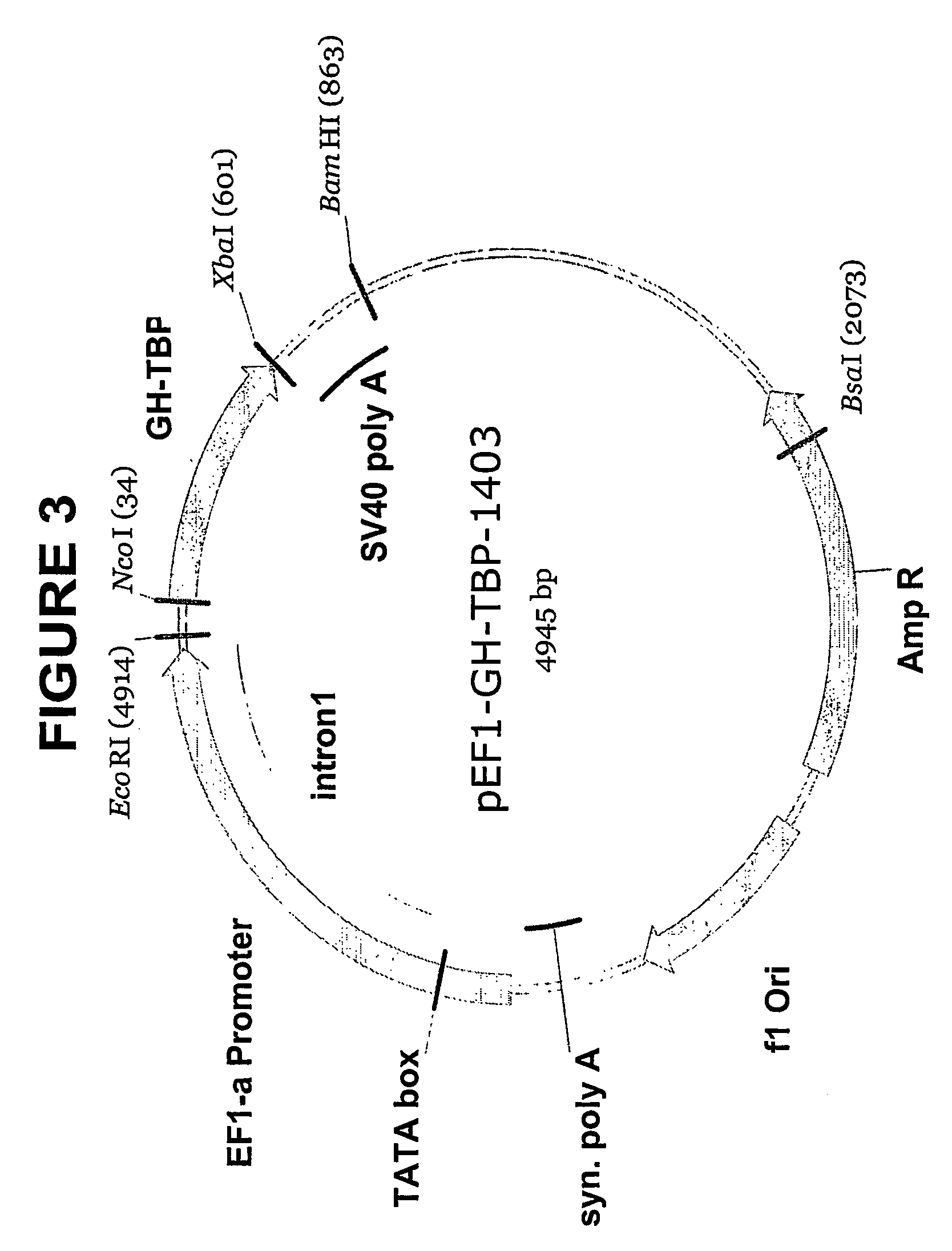Leader sequences for use in production of proteins
- Summary
- Abstract
- Description
- Claims
- Application Information
AI Technical Summary
Benefits of technology
Problems solved by technology
Method used
Image
Examples
example 1
Comparison Between the IgSP-tPA Pre-propeptide and the Human Growth Hormone Signal Peptide, the Secreted Alkaline Phosphatase Signal Peptide, the Murine Immunogobulin Signal Peptide
1.1. Constructions
[0086] 1.1.1 IgSP
[0087] The murine IgG μ-heavy chain signal peptide of SEQ ID NO: 3 (IgSP) cloned as follows. Primers of Seq ID Nos. 13 to 20 were incubated with the T4 polynucleotide kinase (Stratagene) for 2 h 30 at 37° C., and heat inactivated at 75° C. for 10 min. The treated primers were ligated using cycle ligation with Pfu Ligase from Stratagene as recommended by the manufacturer in the following cycle conditions:
[0088] 95° C. for 1 min;
[0089] 40 cycles at 95° C. for 30″, 57° C. for 90″, 70° C. for 2 min
[0090] 70° C. for 10 min.
The annealed oligos were then purified with QIAquick columns, and PCR amplified with PFU turbo using standard conditions with the primer SEQ ID No 13 and 17 under the following PCR conditions:
[0091] 95° C. 5min
[0092] 30 cycles of 95° C. for 45″, ...
example 2
n between the lacSP-tPA pre-proieptide and the tPA pre-propeptide.
[0108] 2.1. Constructions
[0109] 2.1.1. IgSP-tPA-TBPI
[0110] The IgSP-tPA-TBPI construct described in 1.1.5. was digested by Xba-I. The fragment comprising IgSP-tPA-TBPI was cloned into the pmCMV-UbB-LUC-1433 expression vector (FIG. 5) digested by Nco-I and Xba-I.
[0111] 2.1.2. tPA-TBPI
[0112] A tPA pre-propeptide of SEQ ID NO: 2 comprising: (i) the tPA signal peptide and (ii) a truncated tPA propeptide that lacks the three carboxyl-terminal amino acids of the native tPA propeptide was generated as follows.
[0113] The human tPA pre-propeptide was cloned using the IgSP-tPA-TBPI construct as a template. A first PCR was performed with primers of SEQ ID No 55 and 56 in order to amplify the tPA propeptide and the 5′ end of TBPI. In a second PCR, t he PCR product from the first step was extended by re-amplification with primers of SEQ ID Nos. 57, 58 and 56. The PCR product was then cloned into the pGL3-GH-TBPI-1380 vector (...
example 3
Comparison between the IgSP-tPA Pre-Propeptide and the Interferon Gamma Receptor Signal Peptide for Production of Interferon Gamma.
3.1. Constructs
[0119] The IgSP pre-propeptide was fused to a mature interferon gamma receptor chain protein (IFNAR) and cloned into (i) the mCMV-UbB-LUC-1433 vector (FIG. 3); or (ii) a vector comprising the promoter of the mCMV-IE2 gene described in EP application 03 100 617.4.
[0120] A full-length IFNAR, comprising the native signal peptide, was cloned into (i) the mCMV-UbB-LUC-1433 vector; or (ii) the expression vector comprising the promoter of the mCMV-IE2 gene described in EP application 03 100 617.4.
3.2. Measurement of Protein Secretion
[0121] 3.2.1. Protocol
[0122] Constructs were transfected into CHO cells using standard lipid mediated transfection protocols. The secreted proteins were harvested after 48 hrs. A specific Elisa test was used to quantify the amount of IFNAR secreted in the supernatant. The transfections were normalized with a l...
PUM
| Property | Measurement | Unit |
|---|---|---|
| Composition | aaaaa | aaaaa |
Abstract
Description
Claims
Application Information
 Login to View More
Login to View More - R&D
- Intellectual Property
- Life Sciences
- Materials
- Tech Scout
- Unparalleled Data Quality
- Higher Quality Content
- 60% Fewer Hallucinations
Browse by: Latest US Patents, China's latest patents, Technical Efficacy Thesaurus, Application Domain, Technology Topic, Popular Technical Reports.
© 2025 PatSnap. All rights reserved.Legal|Privacy policy|Modern Slavery Act Transparency Statement|Sitemap|About US| Contact US: help@patsnap.com



